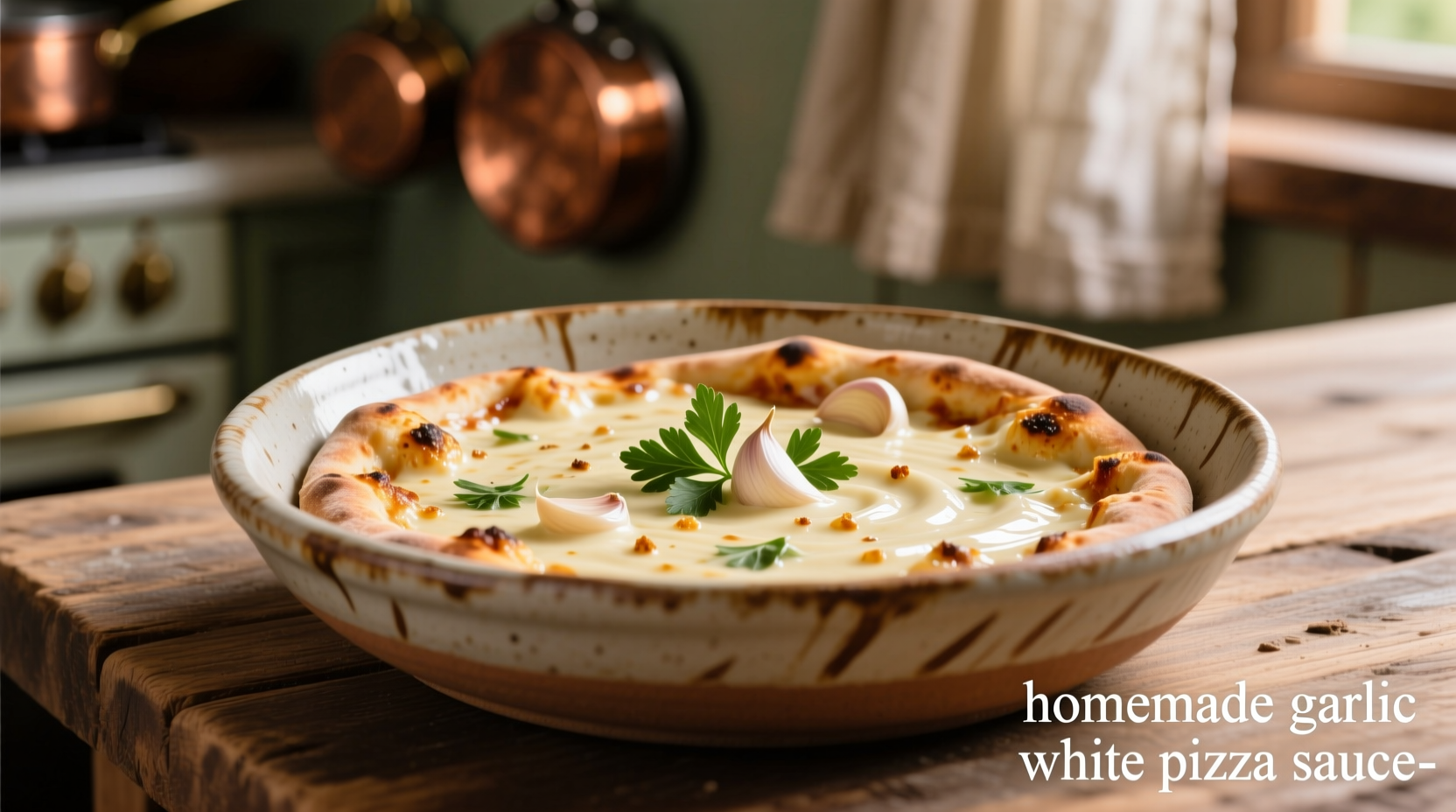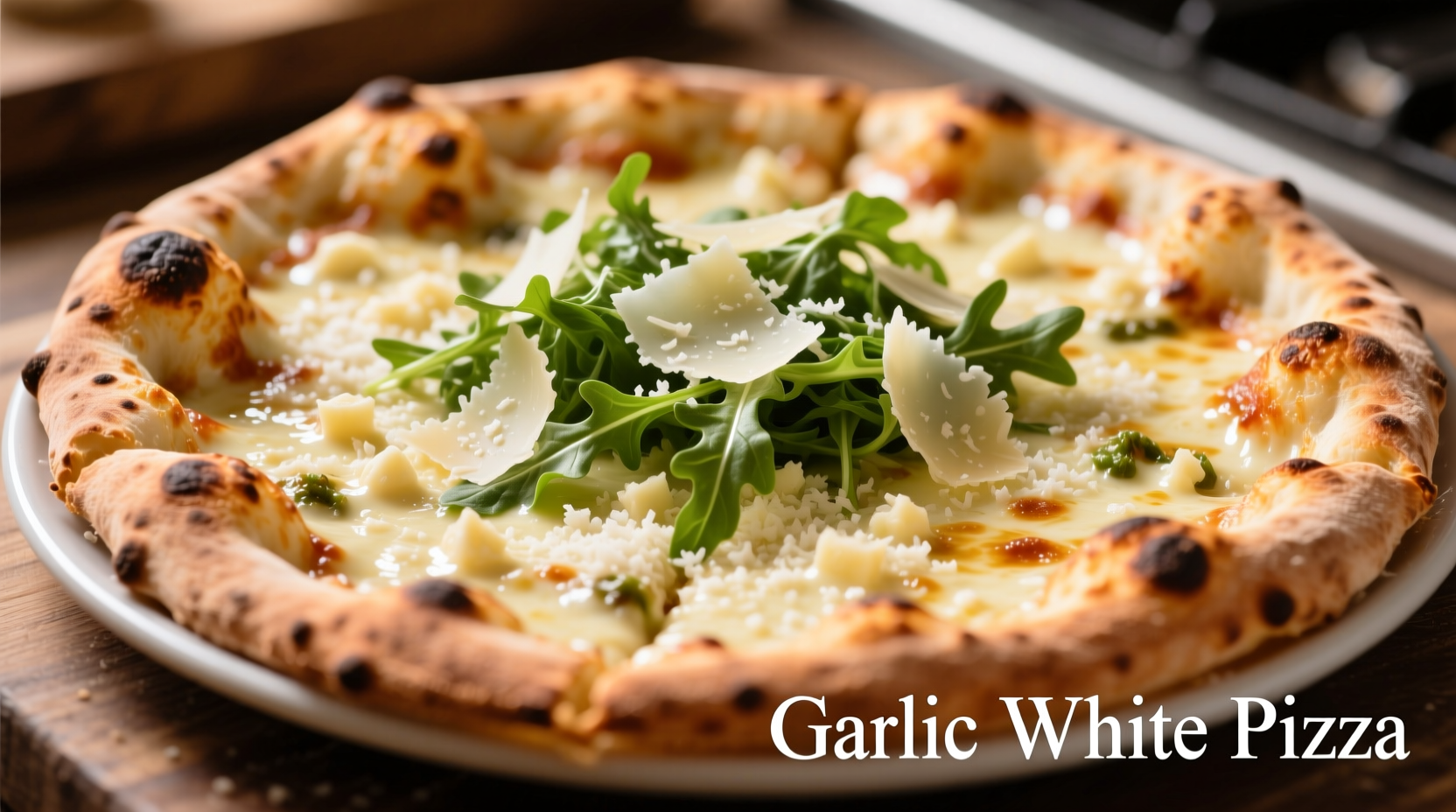What Makes Garlic White Pizza Sauce Different From Traditional Options
Unlike conventional tomato-based pizza sauces, garlic white pizza sauce eliminates acidity while introducing creamy richness. This dairy-forward alternative emerged from European culinary traditions where béchamel sauce has been used as pizza foundation since the mid-20th century. Professional pizzerias increasingly feature white sauce options to accommodate diverse palates and dietary preferences.
| Characteristic | Garlic White Pizza Sauce | Traditional Tomato Sauce |
|---|---|---|
| Base Ingredients | Milk/cream, butter, flour, garlic | Tomatoes, olive oil, herbs |
| pH Level | 6.5-7.0 (neutral) | 4.0-4.5 (acidic) |
| Ideal Baking Temperature | 400-425°F (204-218°C) | 450-500°F (232-260°C) |
| Shelf Life (Refrigerated) | 3-4 days | 5-7 days |
Why Culinary Professionals Choose White Sauce
Professional chefs select garlic white pizza sauce when creating dishes requiring subtle flavor balance. The neutral pH allows delicate ingredients like fresh mozzarella, prosciutto, and roasted vegetables to shine without competing acidity. According to the USDA FoodData Central, the creamy base provides better adhesion for lighter toppings compared to tomato sauces, reducing ingredient slippage during baking.
White sauce particularly excels with:
- Chicken and bacon combinations
- Spinach and artichoke preparations
- Seafood pizza variations
- Vegetarian options featuring roasted vegetables
Creating Perfect Garlic White Pizza Sauce at Home
Professional results require precise technique. Start with a roux using equal parts butter and flour cooked until golden blonde—this prevents raw flour taste while providing ideal thickness. Gradually incorporate warm milk to avoid lumps, then add freshly minced garlic that's been sautéed in olive oil until fragrant but not browned.
Key preparation steps:
- Prepare roux with 2 tbsp butter and 2 tbsp flour over medium heat
- Slowly whisk in 1 cup warm whole milk until smooth
- Add 3-4 minced garlic cloves sautéed in 1 tbsp olive oil
- Season with ¼ tsp nutmeg, salt, and white pepper
- Cook until thickened to coating consistency (about 5 minutes)
- Cool slightly before spreading on pizza dough

Optimizing Sauce Application for Best Results
Unlike tomato sauce, white pizza sauce requires careful application to prevent sogginess. Professional pizzaiolos recommend spreading sauce in concentric circles starting from the center, leaving a ½-inch border for the crust. The ideal thickness should cover the dough without pooling—approximately ⅛ inch thick.
Temperature considerations matter significantly. The National Center for Home Food Preservation confirms dairy-based sauces should be used immediately or refrigerated within two hours to maintain food safety standards. When preparing multiple pizzas, keep sauce warm at 140°F (60°C) using a double boiler.
Common Mistakes to Avoid
Home cooks frequently encounter issues with white pizza sauce due to improper technique. The most common errors include:
- Using cold dairy ingredients causing lumps
- Over-thickening the sauce before cooling
- Burning garlic during preparation
- Applying sauce too thickly leading to soggy crust
- Baking at temperatures exceeding 425°F causing separation
Remember that white sauce behaves differently than tomato sauce during baking. It won't bubble or reduce significantly, so proper initial consistency is crucial. For gluten-free pizza crusts, apply a thinner layer as these absorb more moisture.
Storage and Reuse Guidelines
Refrigerate unused sauce in an airtight container for up to four days. When reheating, use gentle warming methods—microwave in 15-second intervals or warm in a double boiler. Stir frequently to maintain emulsion. Freezing is not recommended as dairy components may separate upon thawing.
Leftover sauce transforms beautifully into pasta dishes, vegetable dips, or as a base for creamy soups. Simply adjust consistency with additional milk when repurposing.











 浙公网安备
33010002000092号
浙公网安备
33010002000092号 浙B2-20120091-4
浙B2-20120091-4